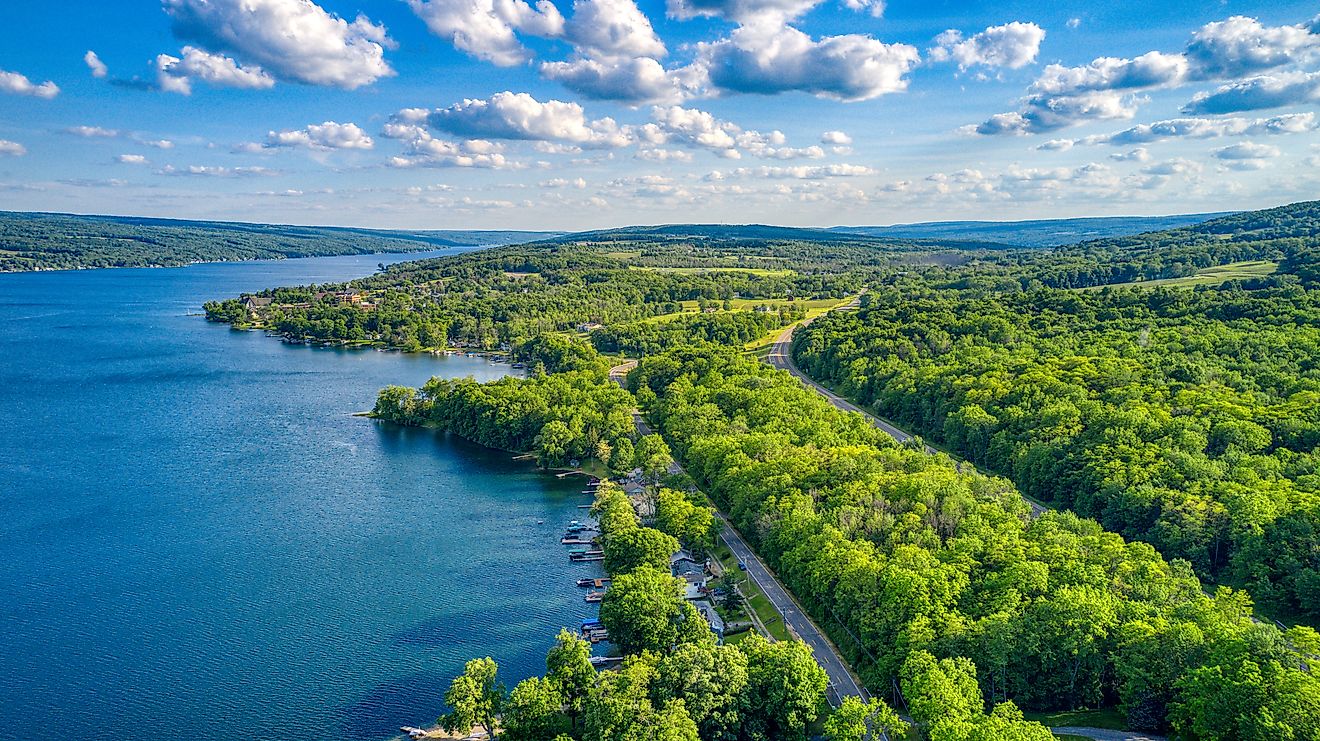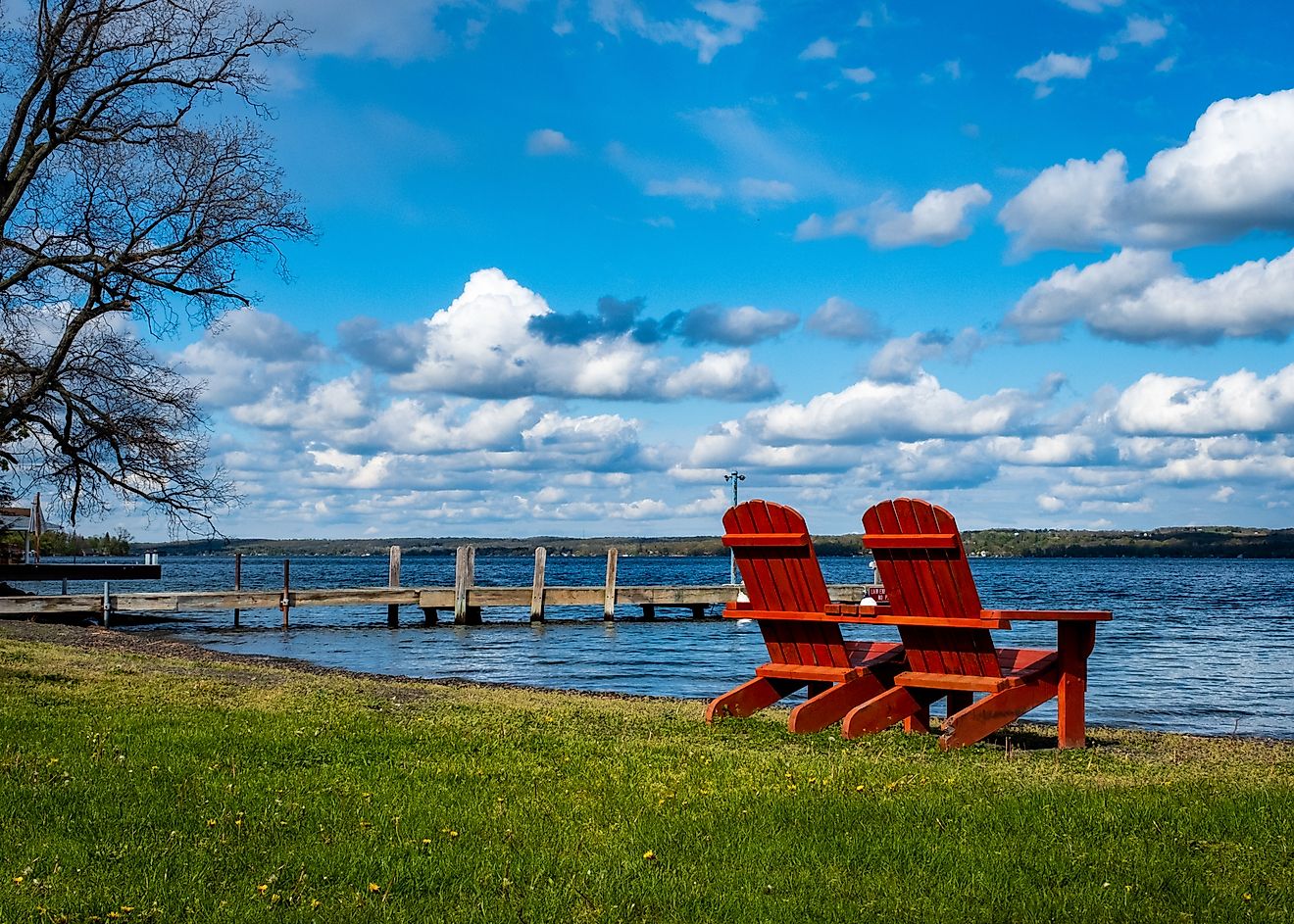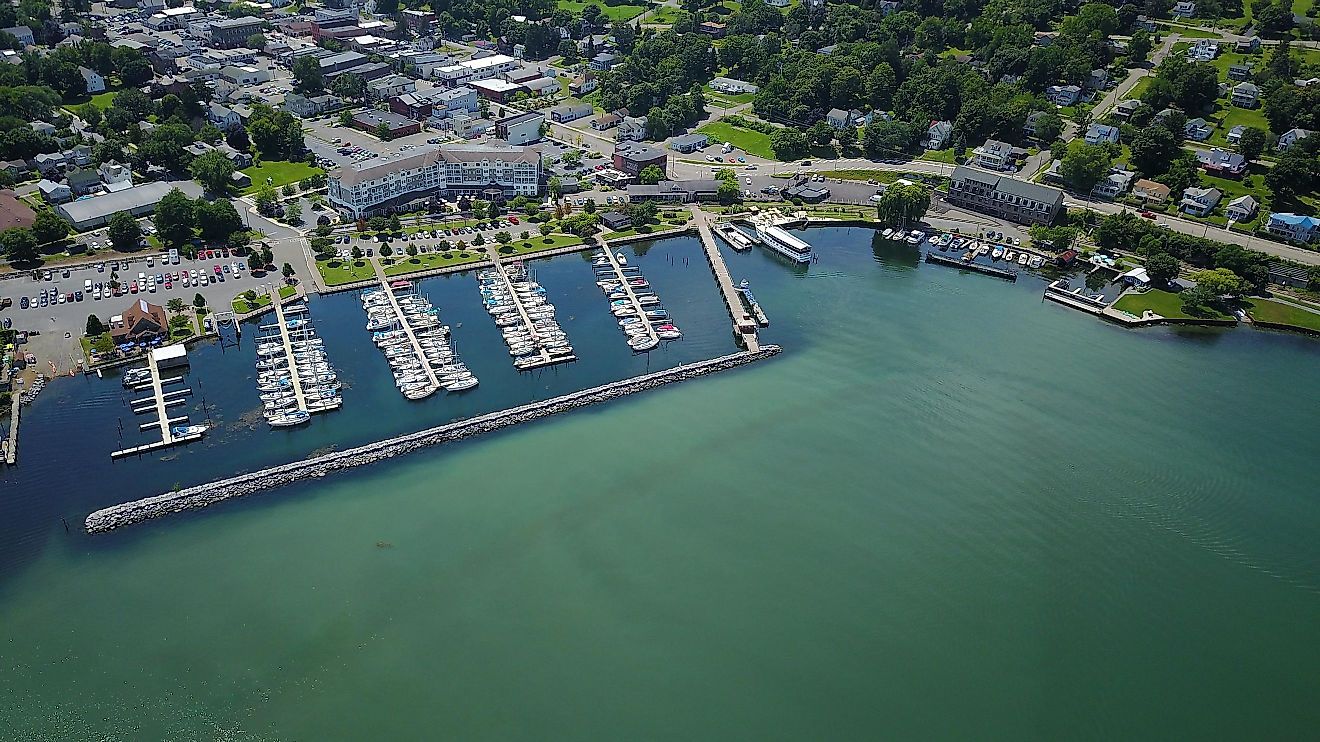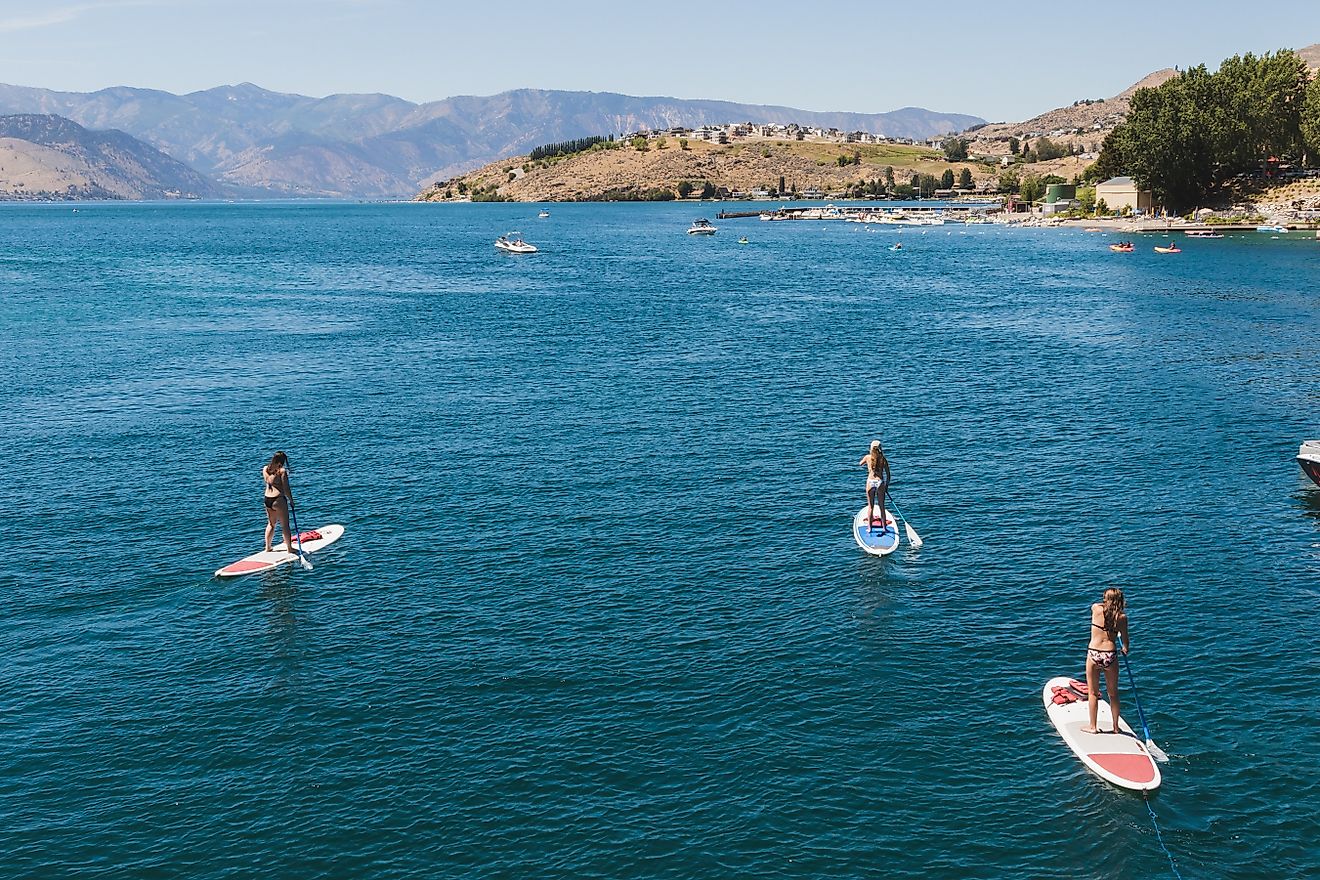
Seneca Lake
Seneca Lake, the largest and deepest of New York’s Finger Lakes, stands as a symbol of the region’s natural beauty and rich history. Stretching 38 miles through the picturesque landscape of upstate New York, the lake has long drawn visitors with its serene waters, rolling vineyards, and charming lakeside towns. Known for its recreational opportunities, including world-class wineries, hiking trails, and abundant outdoor activities, Seneca Lake offers a perfect blend of adventure and relaxation. The lake’s surrounding areas have a history that dates back to the Seneca Nation, one of the original tribes of the Iroquois Confederacy, whose heritage is still reflected in the land today.
From local folklore to the bustling wine trail, Seneca Lake invites travelers to explore both its natural wonders and its fascinating past. Whether you’re navigating the waters, hiking the trails, or sipping wine overlooking the lake, this Finger Lakes treasure is a place where nature, culture, and history converge.
The Geography of Seneca Lake
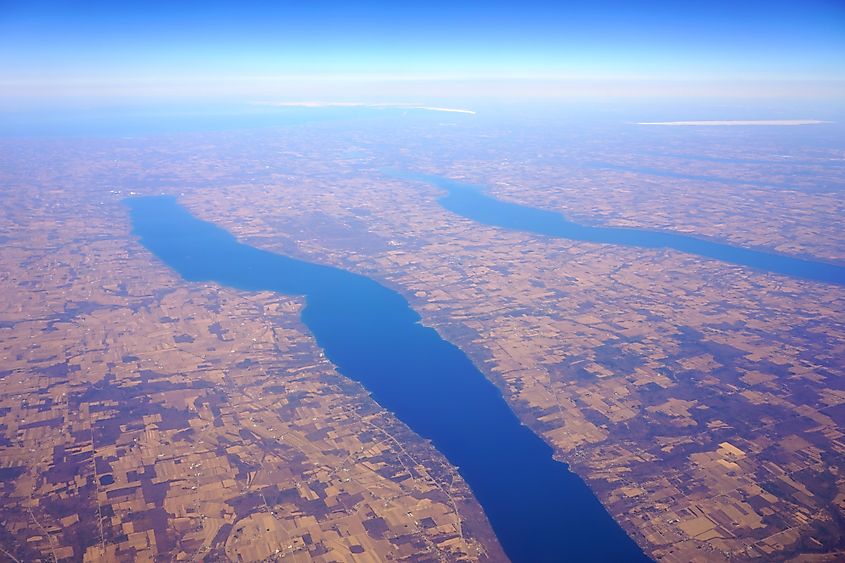
Seneca Lake stretches 38 miles in length and about 3 miles in width at its widest point. Its depth, reaching 618 feet, makes it the deepest of the Finger Lakes. The lake is surrounded by charming towns, including Geneva to the north, Lodi, Romulus, and Hector, with Watkins Glen sitting at its southern tip. The lake is fed by two primary inlets—Catharine Creek and the Keuka Lake Outlet—and its outflow connects to the Seneca River and the Cayuga-Seneca Canal. The surrounding hills create an idyllic backdrop, with steep slopes and valleys that shape the region's unique microclimate, perfect for growing the grapes that have made this region renowned in the world of winemaking.
A Legacy of the Seneca Nation
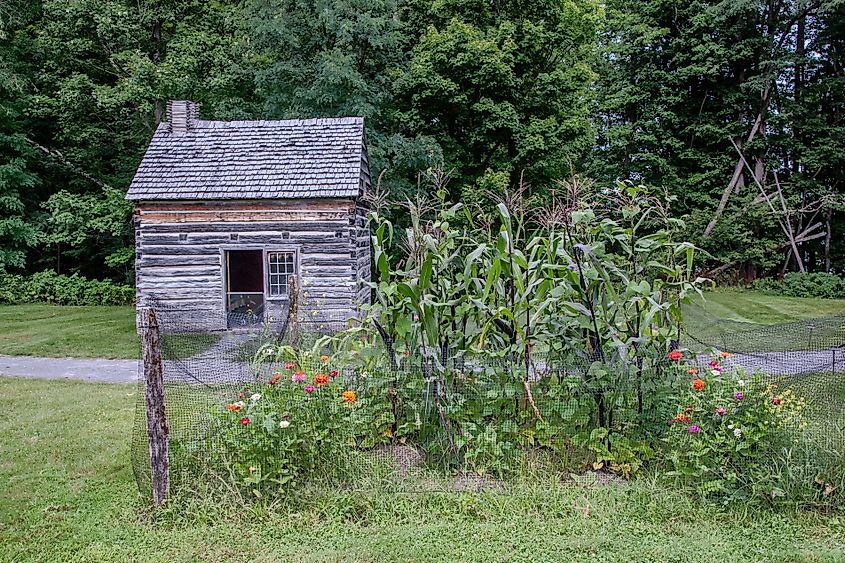
Historically, Seneca Lake was a significant part of the Seneca Nation, one of the Iroquois Confederacy’s Six Nations. The lake’s waters and surrounding lands were integral to the Seneca people, who settled in villages along the shores. These villages, including Kanadaseaga, were tragically destroyed during the American Revolutionary War. The remains of the once-thriving Seneca settlements were eventually reallocated to settlers, marking the beginning of a new chapter in the region’s history. Today, traces of this rich heritage still linger in the area, from the local folklore to the rock paintings found at the lake's southern cliffs.
Outdoor Adventures and Natural Wonders
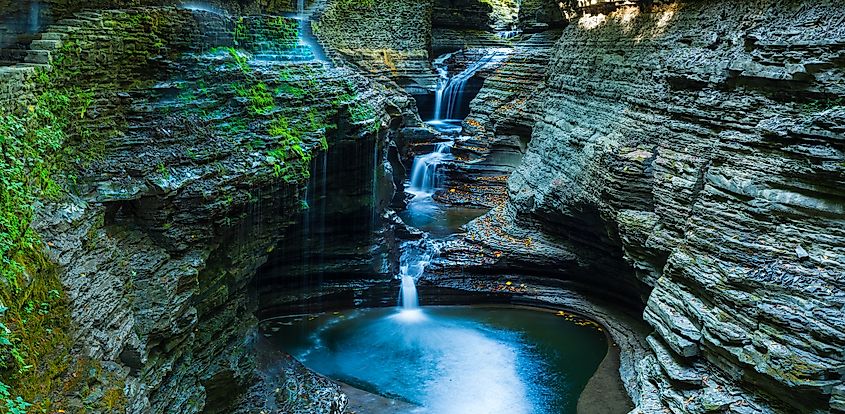
Seneca Lake offers a wide range of outdoor activities, making it a prime destination for nature lovers. Whether you're looking for a day of hiking, a boating adventure, or a peaceful moment by a waterfall, this region delivers.
Hiking and Waterfalls
Seneca Lake is surrounded by a variety of hiking trails, making it an ideal destination for those who enjoy exploring on foot. Watkins Glen State Park is one of the most popular spots, known for its dramatic gorges and 19 stunning waterfalls. Visitors can hike the park’s famous Gorge Trail, which meanders past waterfalls and through lush greenery.
Other great hiking options include the Finger Lakes National Forest, which offers over 30 miles of trails through woodlands, ravines, and pastures. Additionally, the Keuka Lake Outlet Trail provides a scenic five-mile hike from Penn Yan to Dresden, passing through historic mill sites and two breathtaking waterfalls.
Boating and Fishing
For water enthusiasts, Seneca Lake’s clear, deep waters are ideal for boating, fishing, and swimming. Several marinas and boat launches are scattered across the lake, making it easy to explore the shoreline by boat. Visitors can also rent a boat for a leisurely cruise or embark on a sunset excursion to admire the stunning scenery.
Fishing on Seneca Lake is a must for anglers. The lake is home to various fish species, including lake trout, smallmouth bass, yellow perch, and the prized brown and rainbow trout. Chartering a fishing boat with a local guide can help you navigate the lake’s best fishing spots.
Swimming
Take a refreshing dip at one of the several designated swimming areas are located along the lake. Seneca Lake State Park, on the lake's northern shore, features a designated swimming area with a spray park for families. Sampson State Park, on the eastern side, offers a large swimming area with ample amenities. For a more relaxed experience, head to Clute Memorial Park in Watkins Glen, where visitors can enjoy free access to a lovely swimming area.
The Wine Trail: A Sip of the Finger Lakes

One of Seneca Lake’s most celebrated features is its exceptional wine region. The Finger Lakes is the largest wine-producing area in the eastern United States, and Seneca Lake is at the heart of it all. The lake’s depth and the surrounding hills create the perfect conditions for growing grapes, especially the region’s signature varietal, Riesling.
The Seneca Lake Wine Trail is a must-visit for wine enthusiasts. With over 50 wineries lining the lake’s shores, it’s one of the most popular wine trails in the country. The trail offers wine tastings, food pairings, and harvest festivals, where visitors can experience the best of local wines and cuisine. The breathtaking views of the vineyards against the backdrop of the lake make the wine trail not just a tasting journey, but a visual one as well.
Rich History and Folklore
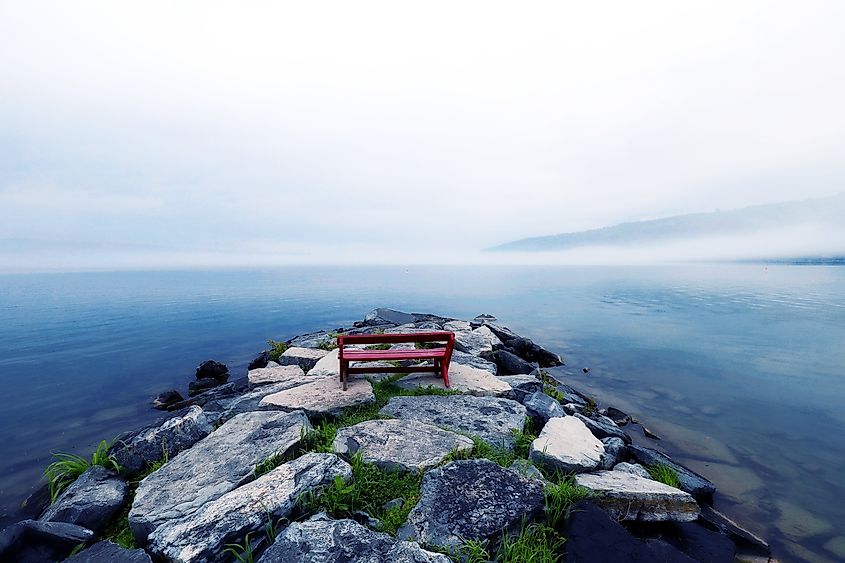
Seneca Lake is not just about natural beauty and outdoor activities—it's also a place steeped in history and folklore. As previously mentioned, the lake was home to the Seneca Nation, and traces of their culture are still present in the region’s artifacts and stories. Local legends speak of a mysterious creature inhabiting the lake’s deep waters. In 1900, a report surfaced about a giant, fanged sea-serpent that was struck by a steamboat and sank to the bottom of the lake, fueling a sense of mystery and intrigue that continues to this day.
In addition to the creature tales, the region also has several ancient rock paintings. These drawings, located on the eastern cliffs at the southern end of the lake, depict various indigenous figures and a tee-pee dwelling, sparking much debate about their origins. While the story of their creation is surrounded by controversy, they remain an enduring part of the lake’s folklore.
Wildlife Around Seneca Lake

Seneca Lake is not only a natural beauty but also a thriving sanctuary for wildlife. The lake’s deep, clear waters are home to a rich variety of fish, including lake trout, smallmouth bass, and yellow perch, making it a prime destination for anglers. Above the water, the region’s skies and shorelines are filled with an impressive array of bird species. Bald eagles soar high above, while great blue herons and sandhill cranes can be spotted along the water’s edge, often seen hunting or nesting in the area’s protected wetlands.
The surrounding forests, parks, and woodlands provide a diverse habitat for land animals as well. White-tailed deer roam the hillsides, while elusive black bears and playful river otters are occasionally spotted in the more remote corners of the landscape. Whether you're casting a line, observing the rich birdlife, or simply enjoying a quiet hike through the woods, the abundance of wildlife in and around Seneca Lake enhances its charm and offers a truly immersive experience in nature.
